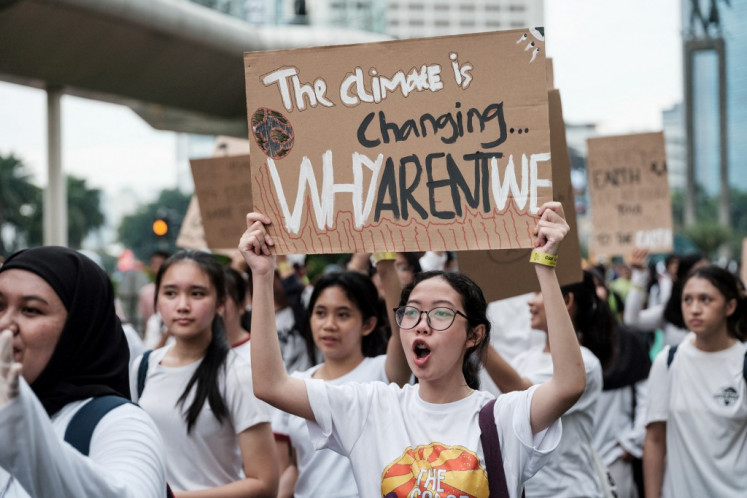AIDS funding limited, goes to `low-impact' programs
The limited funding for HIV/AIDS in Asia and the Pacific region has been unfortunately coupled with ineffective uses of the funds, an expert has warned
Change Size

T
he limited funding for HIV/AIDS in Asia and the Pacific region has been unfortunately coupled with ineffective uses of the funds, an expert has warned.
Swarup Sarkar, Asia unit director of the Global Fund, an international donor organization for AIDS, tuberculosis and malaria, said Wednesday while the available financial resources for HIV/AIDS fell short of the actual need, more money had been instead going to activities that had a low impact on curbing the spread of the disease.
He said the available funds to tackle HIV/AIDS in Asia and the Pacific only amounted to an estimated total of US$0.8 billion, compared to the actual need of $3.1 billion.
But, even the available amounts, such as those for preventive measures, have appeared to mostly go to "low-impact" programs, which have produced little success in preventing new infections.
"More than eighty percent of the available budget has gone to low-risk young people, compared with less than 20 percent that has gone to high-risk young people," Sarkar said in a session on the funding for HIV/AIDS at the 9th International Congress on AIDS in Asia and the Pacific (ICAAP) in Nusa Dua, Bali.
"Costlier interventions, for example blood safety and safe injection prevent only 1 percent of incidence, but absorbs 25 percent of budget," he added, saying "resources do not follow priorities".
This is despite projections that success in preventive measures among high-risk group could lead to the prevention of nearly 100 percent of new infections compared to almost zero percent if the success is in programs for the low-risk population.
Among "high-impact" programs, Sarkar explained, are those targeted at "most-at-risk" populations, such as commercial sex workers and their clients, and men having sex with men.
The "low-impact" interventions, meanwhile, include general awareness programs and universal precautions through mass media and other channels, such as the promotion of public and commercial condoms and safe injection.
Sarkar said low-impact programs were attractive because they were soft and easy to implement.
However, because such programs have minimal impact in reducing new infections and because there is only limited budget available, he urges countries to make high impact the "main guiding factor" in their choice of programs.
Sarkar further suggested that should budgets be limited, programs should be prioritized on commercial sex workers because reaching them alone could lead to about 70 percent of averted infections.
Programs targeted at this group will impact on wider population, that is the sex workers' clients and the clients' long-term partners, he said.
"This is not to say that all these interventions are not important. All these interventions should be addressed in one way or another," Sarkar said.
"But when it comes to resource-constrained settings, like we are experiencing in Asia today, we must prioritize where we allocate resources."
To address the limited funding issues, Sarkar said countries in Asia and the Pacific needed to mobilize their domestic resources instead of continually depending solely on international donors.
Nafsiah Mboi, the secretary of Indonesia's National AIDS Commission, said in the same forum, "Everything comes from outside is temporary, and the health of our people is our responsibility; not the US' or Australia's."
In Indonesia alone, domestic contribution to HIV/AIDS funding has been increasing within the next few years from zero in 2006 to $2.35 million in 2009.
The amount, however, does not even make up 50 percent of the total budget of the National AIDS Commission, most of whose funding still comes from international donor organizations.









